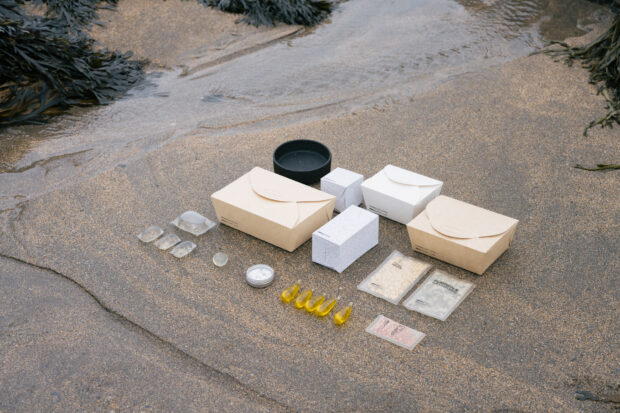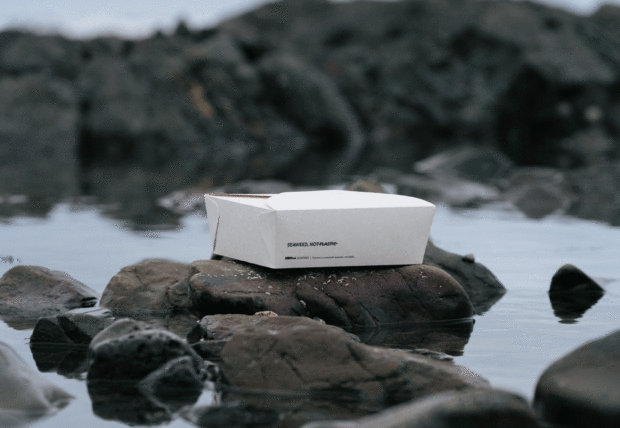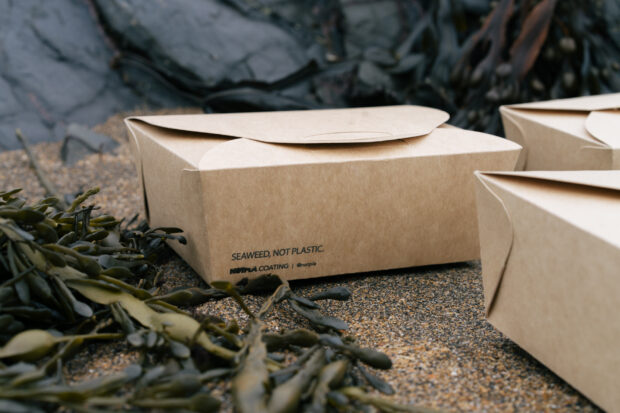The best way to start any trip to the beach is getting there early to find the perfect spot on the sand, away from the seaweed-covered rocks.
One business, Notpla, has embraced the slippery algae, however. Since 2014, its co-founders Pierre Paslier and Rodrigo Garcia Gonzalez have developed a way of making a substance obtained from brown seaweed into a range of sustainable, biodegradable, plastic-free packaging solutions.
We spoke to Pierre Paslier about how owning intellectual property (IP) has played a vital role in the success of his company.

Where did the Notpla story begin?
Pierre met Rodrigo when they were studying Innovation Design Engineering at Imperial College London and the Royal College of Art.
“We ‘spun’ out of Imperial College” Pierre told us. Now based in Hackney Wick, London, Notpla describe themselves as being ‘on a mission’ to make plastic packaging – and society’s reliance on single-use plastic – disappear.
The brand name ‘Notpla’ is an abbreviation of ‘not plastic’. “We have trade marks for our name and brands”, Pierre told us.
Did you know?
Seaweed is among one of the fastest growing resources globally. The biomass of Giant Kelp increases daily by 20%. The production of seaweed does not compete with food crops, nor does it need fertiliser or fresh water. Seaweed also plays a part in preventing the climate crisis by capturing carbon 20 times faster than trees.

The first Notpla Patent
We asked Pierre about where their work with seaweed began.
We started with an edible capsule that can contain water or different liquids that can be used for hydrating marathon runners and at festivals. We created a new manufacturing process for these, and then applied for a patent.
The patent that Notpla had granted for this edible bubble was given the brand name of ‘Ooho’, which was assigned a trade mark in 2017.
Two years later, Ooho capsules were used in the 2019 London Marathon when Notpla partnered with Lucozade. It wasn’t just the marathon runners who benefited that day – in a great win for the environment, an incredible 36,000 Ooho’s were used in place of single-use plastic cups and bottles.
So where did the Notpla team go from there?
We then went on to create a coating for cardboard food containers that replace the traditional plastic coating with a seaweed coating. Pierre told us.
Notpla went on to partner with Just Eat Takeaway.com to replace the plastics and chemicals that line the food boxes that were traditionally used by the takeaway industry.

IP and partnership working
We asked Pierre if IP rights are helpful when working with technology partners.
We find IP rights powerful for working with different technology partners that might be interfacing with us. When rights get granted, it’s much easier.
More recently, it’s been about making sure that we can work with partners that have technologies that interact with ours. IP rights give us a clear set of limits and defines who is doing what.
Notpla awards and accolades
- Innovation of the Year, UK Packaging Award 2022
- Innovation Award, the Responsible Packaging Expo Awards 2022.
- Winner of The Earthshot Prize, in the ‘Build a Waste-free World’ category 2022
- Notpla has been officially certified as a B Corporation business
- The TOM FORD Plastic Innovation Prize 2023
Has IP played a part in Notpla attracting funding from investors?
The main driver has been raising investment from venture capital funding. IP was an important element. Investors following businesses regard the presence of patents as a strong indication that value is being created. IP is part of the due diligence of investors.
Notpla secured their first venture capital funding in 2018 from Sky Ocean Ventures.

So what does the future hold for Notpla and its IP?
Patents will continue to be an efficient method of creating and safeguarding the value that is created when developing new technologies.
